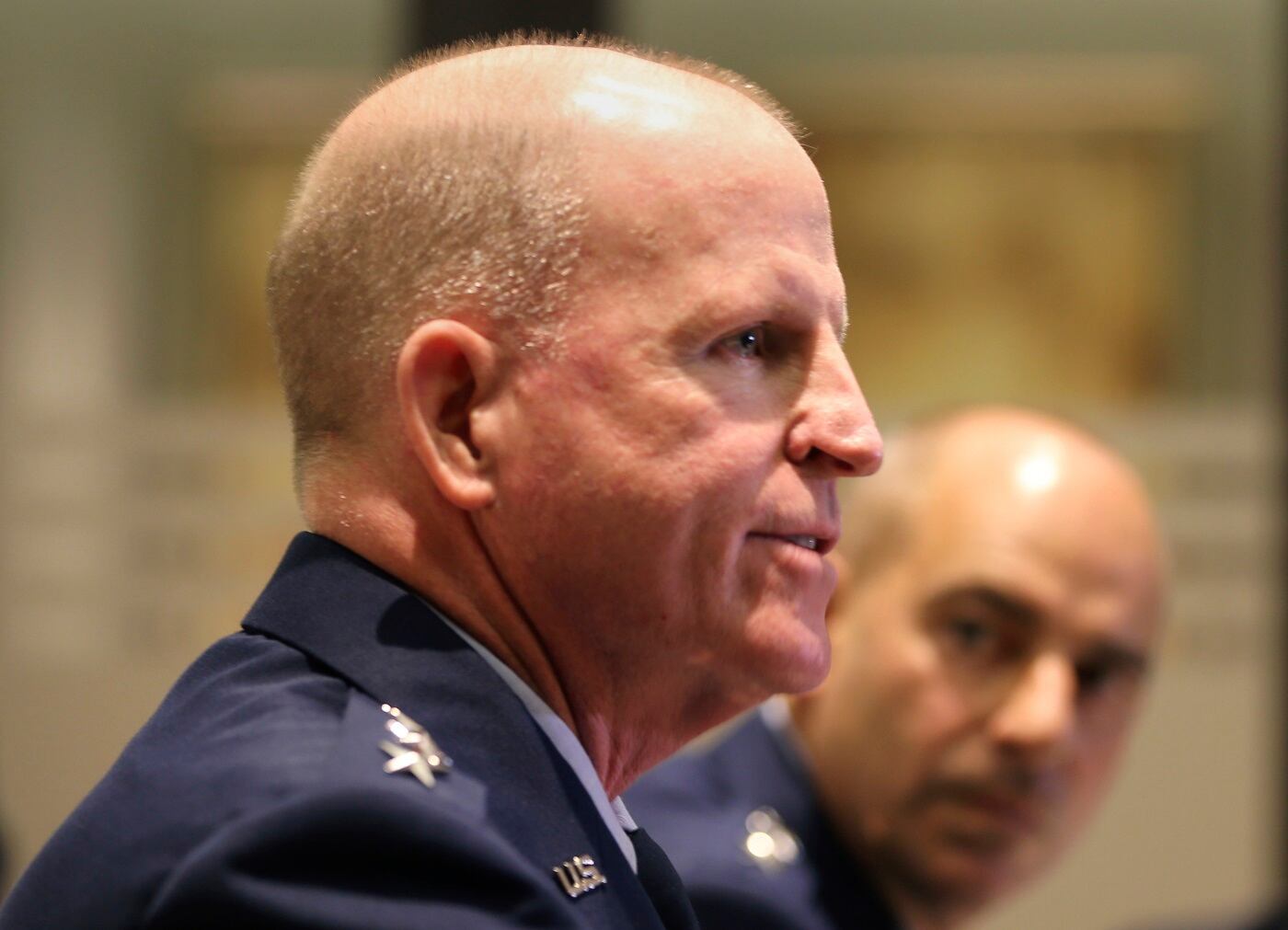The Air Force is developing a host of robots and machine learning that will help repair damaged airstrips much like a Roomba cleans your carpet, but smarter — and with explosives.
The duties of civil engineers in the Air Force, from mowing grass along runways to spending hours scanning the flight line pavement for cracks, fissures or pocks that could derail an entire operation, falls squarely within the space where robots work best — in jobs that are “dirty, dangerous or dull,” said Bobby Diltz with the Air Force Civil Engineer Command.
Diltz spoke Wednesday at the National Defense Industry Association’s Ground Robotics Capabilities Conference.
RELATED

If a runway is hit by enemy munitions, the civil engineers must first do a damage assessment and then determine if there is any unexploded ordnance before moving into repair mode.
Any one of those steps can take hours. That doesn’t work in a fast-paced fight where planes need to get in the air, whether it’s to continue bombing or support runs or to move them to a more secure location in case the airstrip gets hit again.
With a combination of robots and algorithms, the civil engineers hope to cut down that time and danger drastically, Diltz said.
Some of the elementary, obstacle-avoidance tech in the common Roomba robot vacuum are the types of capabilities that allow the same types of robots to find their way on an airfield.
Airmen at South Korean airbases are now deploying quadcopters, such as the Aeryon Skyranger, to assess runway damage, Diltz said. Those same drones, though, could be used to do perimeter security around an airfield or employ a variety of sensors to detect contaminants.
Robot adaptation is happening at various levels in civil engineering, from the small drones to “bolt-on” or “in-seat” kits that can be fitted into existing heavy equipment such as forklifts and bulldozers. Those kits then allow airmen to remotely control the device.
Leader-follower autonomous robots are being evaluated to move materials from warehouses to airmen on the line, reducing fatigue and risk for airmen so they can focus on the repairs.
On the explosive ordnance disposal side, the Air Force is now fielding the Micro Tactical Ground Robot, a robot that can maneuver in tight spaces and seek out explosives.
Diltz said a request for information is pending in the coming weeks or months for a large EOD robot to replace the decades-old platform in operation now.
They are looking closely at sensors and the algorithms that run them, he said. The next steps are to add radar and LIDAR, or Light Detection and Ranging, capabilities to some of the existing platforms, giving airmen a deeper look at the environment.
But beyond the sensors are how they’re interpreted and how developers can simplify the readings for the end user.
“These 20-year-olds don’t have PhDs. and sometimes you need a PhD to read a LIDAR,” Diltz said.
Todd South has written about crime, courts, government and the military for multiple publications since 2004 and was named a 2014 Pulitzer finalist for a co-written project on witness intimidation. Todd is a Marine veteran of the Iraq War.





